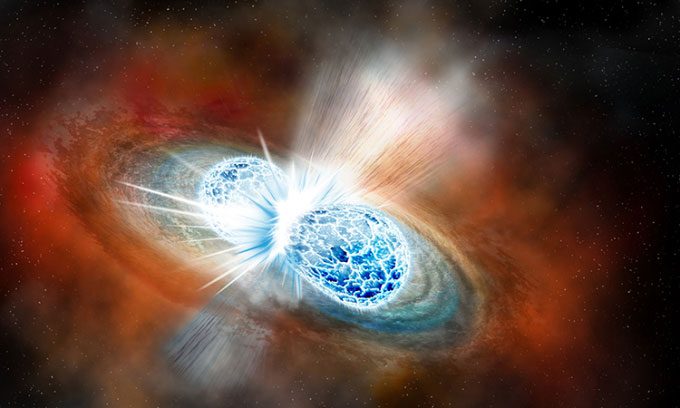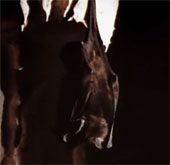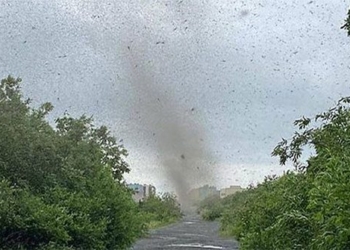ALMA Observatory in Chile Captures Unprecedented Scene of a Collision Stars Billions of Light Years Away.
According to a new study published on arXiv on August 1, astronomers from Northwestern University in the United States and Radboud University in the Netherlands have observed millimeter wavelengths from the collision of at least one neutron star with another star for the first time.
This intense merger event – known as GRB 211106A – produced one of the strongest short gamma-ray bursts ever recorded. The light traveled from 6 to 9 billion light years across the universe before being detected by the Atacama Large Millimeter/Submillimeter Array (ALMA) in Chile.
ALMA observed the brilliant glow from the GRB 211106A star collision. (Video: ESO/NAOJ/NRAO)
The time-lapse video shows the glow caused by the collision prominently in the frame, fading away over 63 days.
Gamma-ray bursts (GRBs) – including long and short GRBs – are the most intense explosions in the universe. In just 10 seconds, they can release more energy than a star like the Sun emits in 10 billion years.
According to NASA, long GRBs are typically caused by supernova events, where the core of a massive star collapses into a black hole, lasting from a few seconds to several minutes. Meanwhile, short GRBs result from neutron star collisions and last from a few milliseconds to under 2 seconds. However, when the material ejected from the explosion collides with surrounding gas and dust, it creates a brilliant glow that can be observed for months.

Simulation of a neutron star collision. (Image: Robin Dienel)
“Short gamma-ray bursts typically occur in distant galaxies, meaning their light is quite faint by the time it reaches telescopes on Earth. Before ALMA, millimeter telescopes were not sensitive enough to detect these remnants,” emphasized astrophysicist Tanmoy Laskar from Radboud University.
The new observations of GRB 211106A will help scientists further understand GRB events and their impact on the surrounding environment.





















































